With remittance and tourism supplementing strong agricultural foundations, villages of Gandaki have transformed in just a decade and a half. And women are leading the charge.
Durga Rana Magar | CIJ Nepal
As the evening settles in, Machapuchare, the Fishtail Mountain, gleams over the front yard. Inside, the sound of sizzling meat fills the kitchen. Hita Sharma, the head of the household, is sorting through fresh fiddlehead ferns on a bamboo tray. Nearby, cucumbers, leafy greens, radishes, and other vegetables grown in the kitchen garden are being chopped. A party of guests out in the yard are happily gazing at the shimmering Himalayas.
This scene might seem like a festival or a special occasion, but it is a daily routine for the 45-year-old Sharma. “I cook delicious meals every morning and evening,” she says with a smile, “I serve my guests and eat well myself too.”
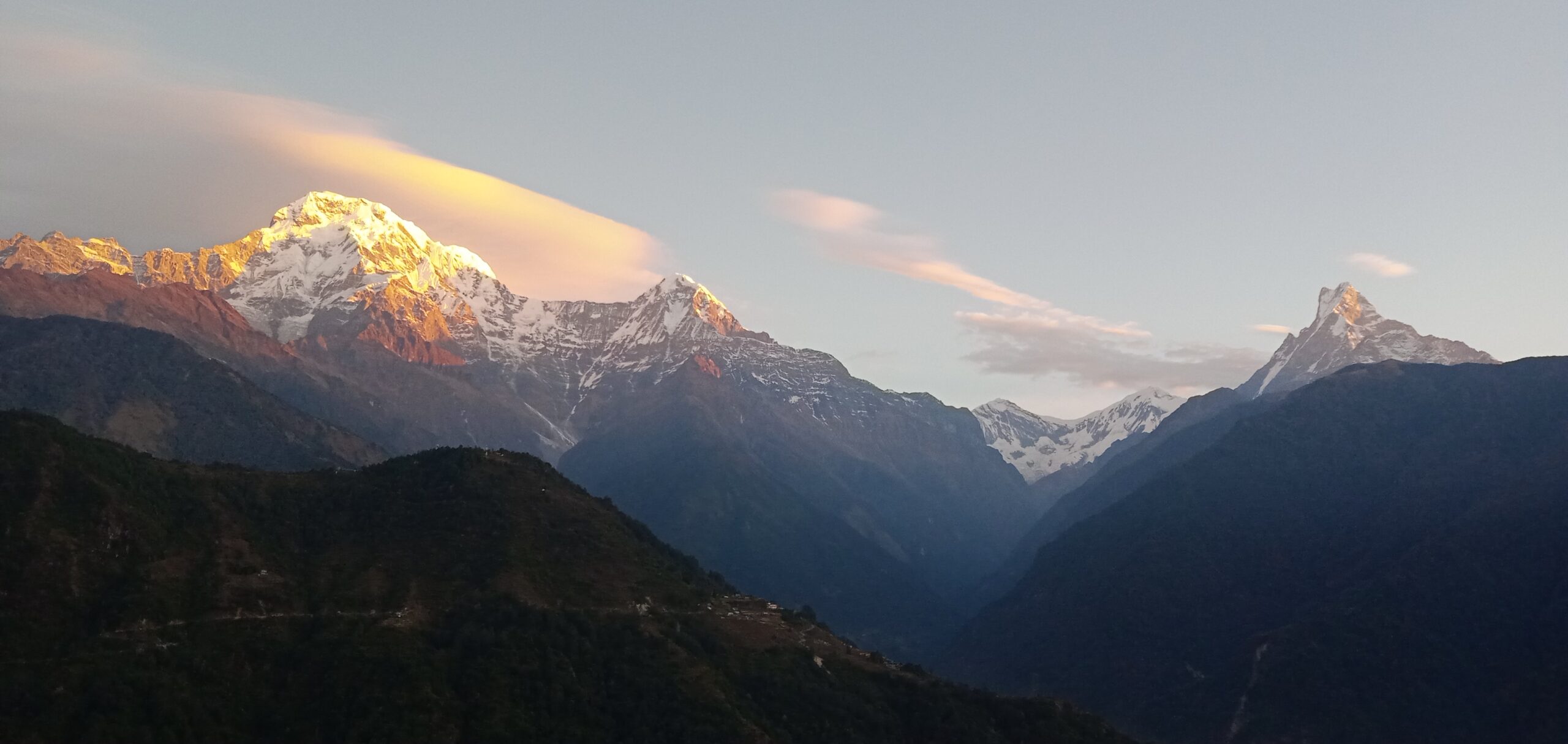
Sharma who hails from Ghandruk (Annapurna Rural Municipality-10, Kaski), 45 kilometers north of Pokhara, finds that her life is much more comfortable these days. “There’s nothing missing, nothing we can’t get. Even if we run out of something, it arrives quickly from Pokhara,” she says.
After losing her husband at the age of 23, Hita struggled to make ends meet for her family, which included two children and her elderly father-in-law. At the time, she didn’t have enough land to grow crops to feed her family year-round. “I can’t believe how I survived that ocean of hardship,” she reflects on the past.
But in the last decade and a half, the villages of Gandaki have remarkably pulled millions of people, like Sharma, out of extreme poverty. The fourth ‘Nepal Living Standards Survey 2079/80’ by the National Statistics Office confirms that millions of people in these villages have been uplifted from poverty.
According to the survey, Gandaki Province has the lowest poverty rate in the country, and rural poverty is lower than the province’s urban areas. This sharply contrasts with the national average, where rural poverty is, not surprisingly, higher than urban poverty.
The poverty rate in Nepal is 20.27%, meaning 20 out of every 100 Nepalis are poor. These individuals are unable to spend even Rs. 200 per day on basic living expenses, classifying them as living below the poverty line. According to the World Bank’s standard, a Nepali individual needs Rs. 72,908 annually to meet basic living needs.
In Gandaki’s villages, 10 out of 100 people cannot spend Rs. 200 per day, whereas in villages in Bagmati province, the ratio is 25 out of 100, and in Sudurpaschim province it’s 40 out of 100.
A decade and a half ago, Gandaki’s situation wasn’t as rosy. The third ‘Nepal Living Standards Survey 2066/67’ reported a national poverty rate of 25.16%, with the poverty rate in the hilly rural areas of the Western Development Region being even higher (28.01%). Though Gandaki Province didn’t exist at the time, the hilly areas of the Western Region and current Gandaki Province largely overlap. Among the 11 hilly districts of the Western Region at the time, all but Gulmi, Palpa, and Arghakhanchi are now part of Gandaki Province. The recently added Nawalpur district in the Terai is largely covered by urban areas. Therefore, it can be deduced that poverty in Gandaki’s villages has decreased by around 18% in the past decade and a half.
Despite cities offering abundant opportunities for industries, businesses, and employment, poverty has been a difficult issue to ameliorate, so how did such a miracle occur in Gandaki’s villages? Statistics showing Gandaki’s giant leap towards prosperity initially surprised even experts like Dr. Hemraj Regmi, Deputy Director of the National Statistics Office.
“We rechecked the data thinking there might be a technical error, but there was none. Everything is accurate,” says Regmi, a demographer and spokesperson for the Statistics Office. “Gandaki’s rural areas have indeed made an improbable leap.”
Windfalls of Tourism
As the morning sun paints the white peaks of Annapurna South, Machapuchare, and Himchuli golden, the light brings new hope to the homes in Ghandruk. Children smile, tourists enjoy themselves, and local businesses thrive. According to the Ghandruk Tourism Development Committee, in fiscal year 2080/81, a total of 1,75,000 tourists, both Nepali and foreign, visited Ghandruk.
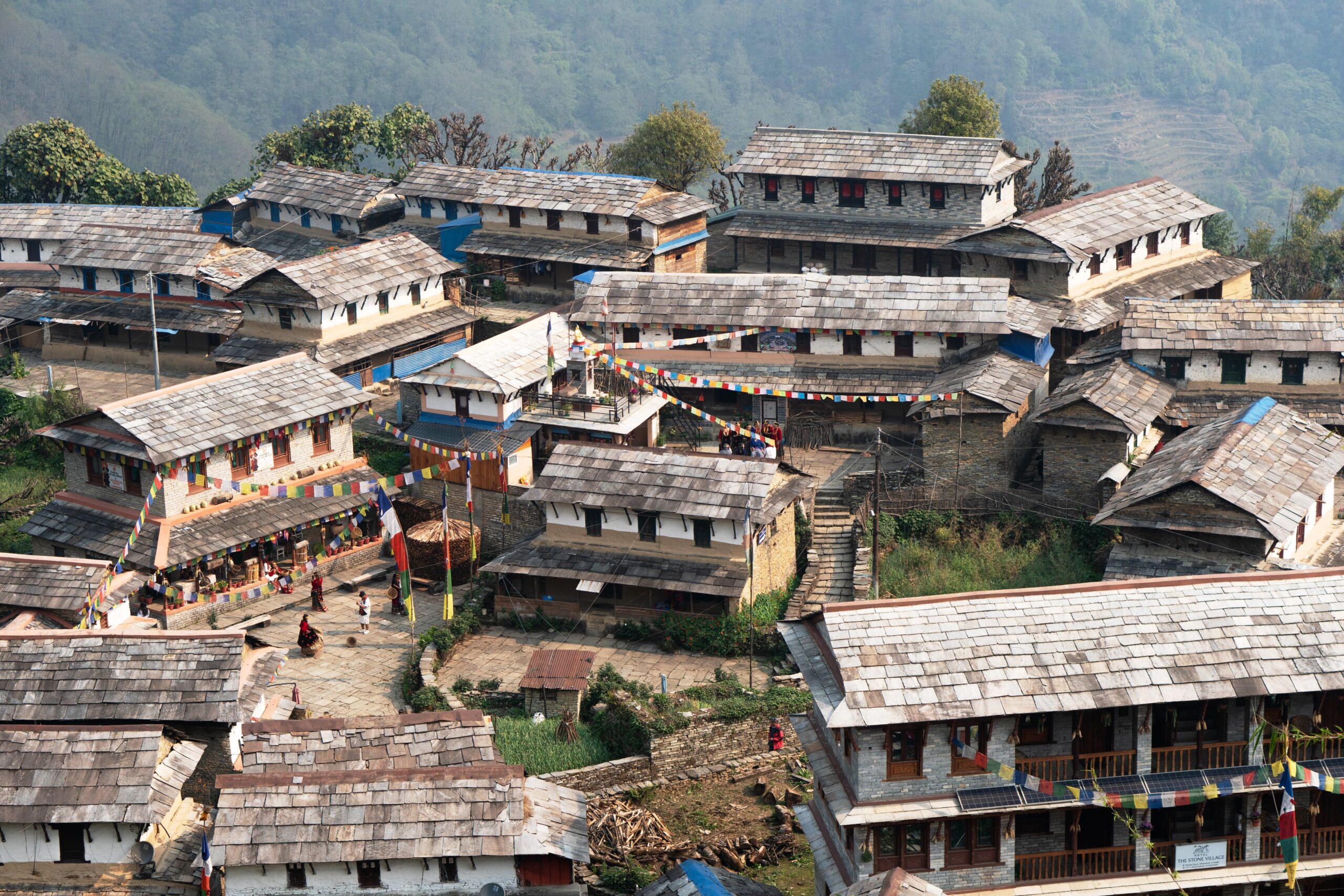
A decade ago, however, Hita’s financial situation was dire. Despite having lived in Ghandruk for many generations, her family wasn’t involved in the tourism business, even though their language, culture, and accent were deeply rooted in the local Gurung community. “At that time, everyone was running hotels and homestays, or doing business,” she says. “I was alone, my kids were small. I used to get by doing daily wage labor.”
Back then, the number of tourists passing through Ghandruk on their way to see the Himalayas or for trekking was on the up. As the number of tourists grew, more hotels opened. Then after the Pokhara-Ghandruk road was opened, the number of visitors to the village surged. Furthermore, in 2049 B.S., women from Ghandruk who had visited Darjeeling, India, brought the concept of homestays back to the village. Gradually, this innovation helped change the villagers’ lifestyles and their incomes started to grow as well. But though prosperity had arrived in her neighborhood, Hita still lacked the capital to start a business. Meanwhile, her neighbor Harimaya Gurung, who had introduced the homestay concept to Ghandruk, urged her to start as well. “She told me she’d refer guests to my business, and that gave me the courage. Other neighbors also encouraged me,” says Hita.
Now, in just 10 years, her life has completely transformed. All her debts are fully paid off. Her house is well-maintained and tidy. Her son has just finished studying chartered accountancy, and her daughter has become a lab technician and moved to Japan. “They’ve made me forget the hardships of carrying heavy loads and cooking over a fire,” Hita says.
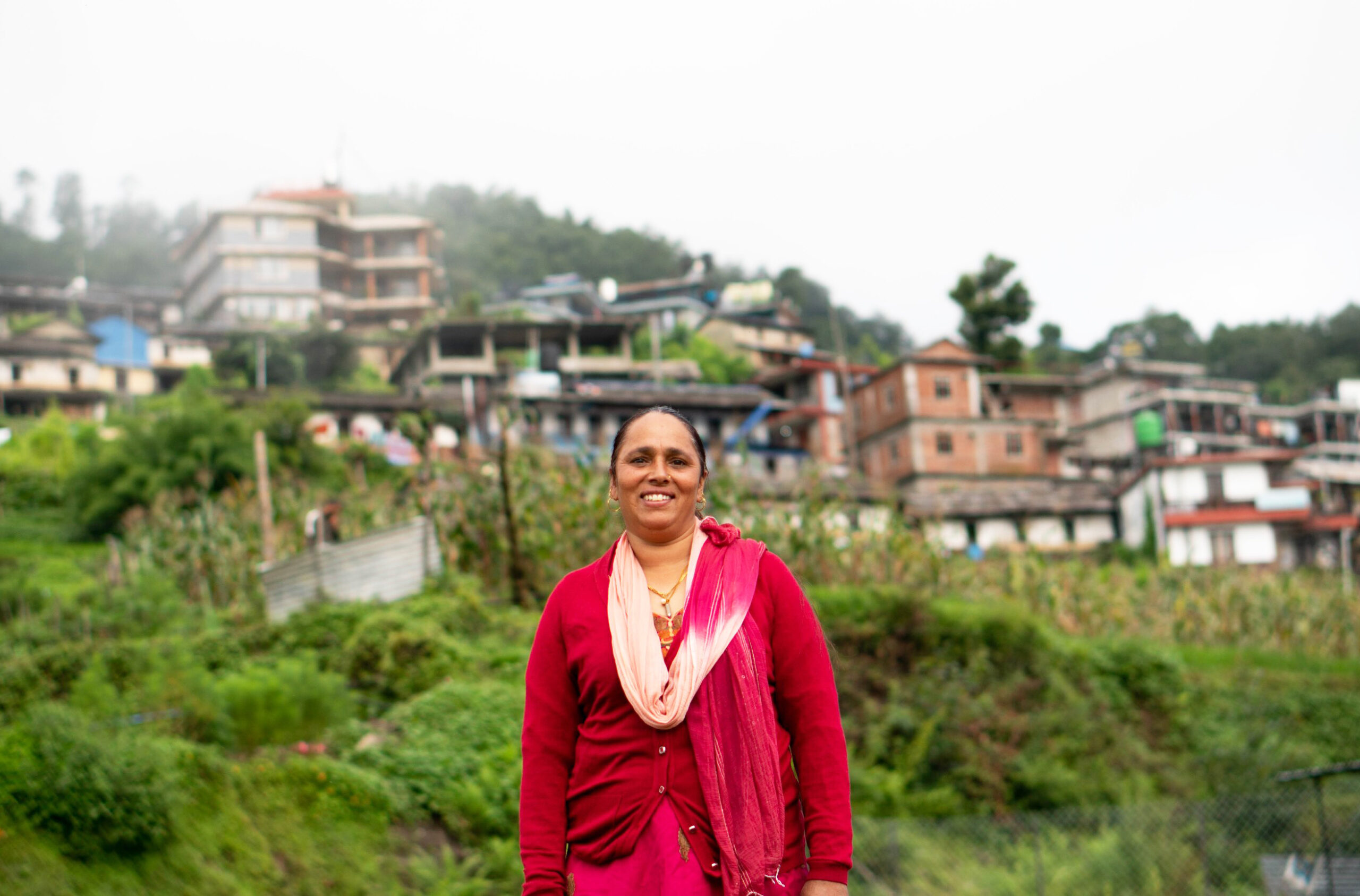
Just like Ghandruk, other villages in Gandaki province have also surged towards prosperity through tourism, says Deputy Director of the Statistics Office, Regmi. “Tourism is the primary factor in increasing income,” Regmi states, “It has also boosted other businesses, bringing money into the villages.”
The Gandaki provincial government provides a grant of Rs. 10 lakhs to start new homestays. According to the statistics from the Province’s Policy and Planning Commission, there are 342 homestays in the province. Additionally, there are also 656 star and mid-range hotels.
Furthermore, seventy percent of businesses related to tourism are owned by women. Of these, 53.2% are in rural areas, and 46.8% are in cities. The survey by the Provincial Planning Commission shows that women’s involvement in rural businesses is higher than in urban areas, contributing to the increase in family incomes.
Dr. Krishnachandra Devkota, Vice-Chairperson of Gandaki Province’s Policy and Planning Commission, also highlights tourism’s role in reducing poverty in rural areas. “Gandaki’s villages are famous tourist destinations,” Devkota says, “Nearly every village has natural beauty and heritage sites that attract tourists, which has boosted internal tourism, employment, and income.”
According to provincial government data, Gandaki has 110 well-known tourist destinations across its 11 districts. Both domestic and international tourists visit these places regularly. Statistics from the Provincial Planning Commission indicate that approximately 10 lakh tourists (both domestic and international) visit Gandaki annually.
Economist Rameshwar Khanal also emphasizes tourism’s key role in Gandaki’s villages. “Gandaki’s villages have been relatively prosperous for a long time,” says Khanal, “People here always had enough to eat, and tourism has further increased their income.”
Agrarian Roots
Khanal, who is also a former finance secretary, believes that while tourism is now the main source of income, the reduction in poverty in Gandaki is primarily due to its solid agricultural roots. “Lamjung, Tanahun, Kaski, and Syangja have long had strong agricultural systems,” Khanal explains, “Even before the government invested in hill irrigation projects, community irrigation systems in these areas were effective.”
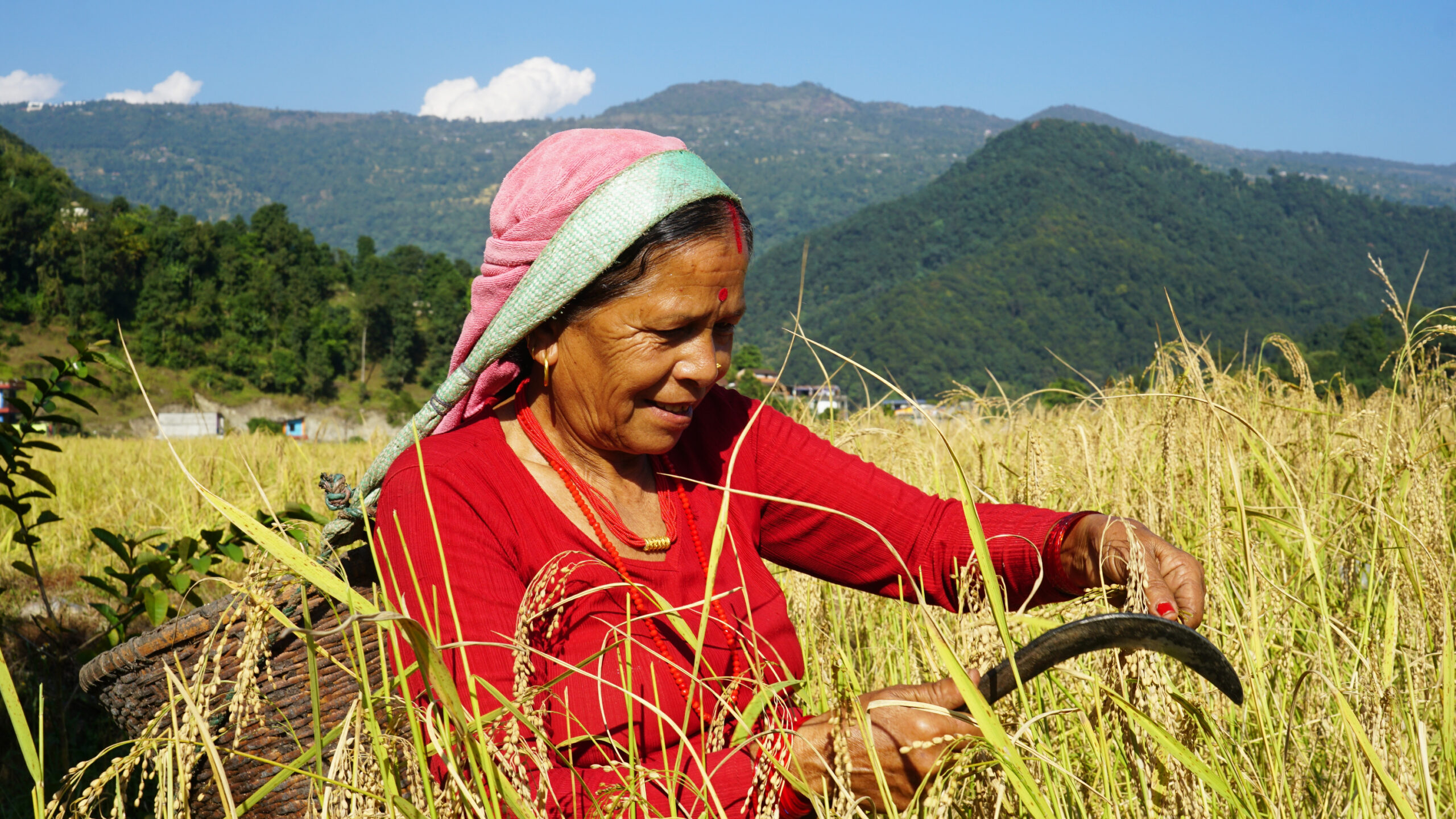
Khanal cites examples of good traditional irrigation systems in places like Baglung and Parbat and mentions that irrigation projects like Lamjung’s Rainastar project and Parbat’s Phalebas project, built in the 1990s, have significantly supported agriculture. “Because of efficient irrigation, Gandaki Province produces the most paddy among the hills,” he says.
Khanal’s views are supported by the National Statistics Office survey. According to the survey, while 60.4% of households in Nepal are engaged in farming, this number is slightly higher in Gandaki at 63.5%. The province produces enough rice, maize, and wheat to meet its annual needs.
Former secretary Khanal adds that due to good production in the Kali Gandaki watershed and other river systems, Gandaki has not faced the kind of food shortages seen in other provinces. “Most people in Gandaki have traditionally usually eaten rice, and very few families relied solely on millet or maize,” he says, underlining the province’s comparatively prosperous agricultural roots.
Deputy Director of the Statistics Office, Regmi, also notes that compared to hilly rural areas in other provinces, Gandaki’s rural areas have better agricultural productivity. Local production is sufficient to feed most families for the entire year. According to the Planning Commission’s statistics, agriculture contributes 27.4% to Gandaki’s total gross domestic product (GDP).
Home and Away
Hita Sharma initially used to farm in Ghandruk but due to limited land, she also had to also work as a laborer to supplement her income. Now, much has changed. In addition to earning well from her homestay, her daughter, who moved to Japan, and her son, who works in Pokhara, also contribute to the family income.
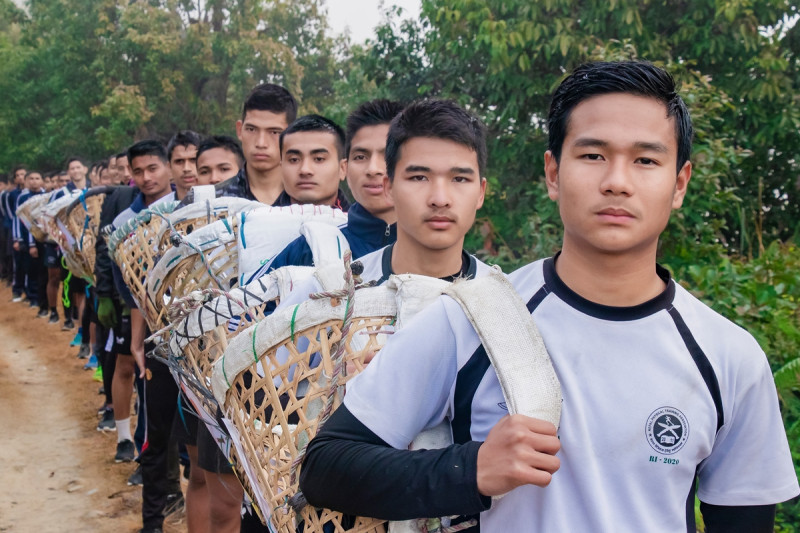
Economist Khanal also highlights that education levels in Gandaki have long been high. “By 2017 B.S., most districts in Gandaki, except Manang, had already opened schools,” he says. According to the Living Standards Survey, Gandaki has the highest literacy rate in the country for people over five years of age. Nepal’s overall literacy rate is 77.4%, while Gandaki’s is 83.4%. Madhesh province has the lowest literacy rate at 68.2%. The literacy rate for people over 15 years old is 72.5% nationwide, but in Gandaki, it is 79.6%, slightly lower than Bagmati’s 80.2%. (See info.)
As such, education has opened up many employment opportunities for people in the province and income from remittance is surging. “When children working in the cities and abroad send money home, economic activities increase, naturally reducing poverty,” says Deputy Director Regmi. According to the Living Standards Survey, families in Gandaki receive an average of Rs. 2,15,000 in remittances, while the national average is Rs. 1,45,093 per household. Karnali province receives the least remittance, averaging Rs. 95,062 per family. (See info.)
When comparing per capita remittances in rural areas, Gandaki far outsrips other provinces. The average remittance per person in Gandaki’s villages is Rs. 57,823, while in Sudurpaschim province, it’s only Rs. 16,960. The national average for rural areas is Rs. 28,431 per person.
Maya Timilsina, a member of the Provincial Planning Commission, also emphasizes the significant role remittance has played, alongside tourism, in reducing poverty in Gandaki. Remittance has been flowing into Gandaki for decades. “The tradition of Nepalis going abroad for work began in Gandaki,” says economist Khanal, “Even before the Rai and Limbu communities from the East joined the Gurkha Rifles, the Magars of Gandaki had already started the tradition of enlisting in foreign armies.”
Former Finance Minister Surendra Pandey attributes the strong flow of remittance in Gandaki to its long-standing “Lahure” (military enlistment) culture. “Gandaki had a culture of sending men abroad to work in the military, and now many also go for other jobs,” he notes.
According to Deputy Director of the Statistics Office, Regmi, two main factors besides tourism have contributed to poverty reduction in Gandaki: first, the significant rise in remittance over the past decade, and second, the increase in wages.
Hardworking Hands
In recent years, the increase in wages, even for ordinary laborers, has surprised Hita Sharma. She recalls that 15 years ago, it was difficult to earn 100 rupees a day. “Men earned a bit more, but women would get only 80–90 rupees,” she says, “Now it’s possible to make even 1,000 rupees daily.”
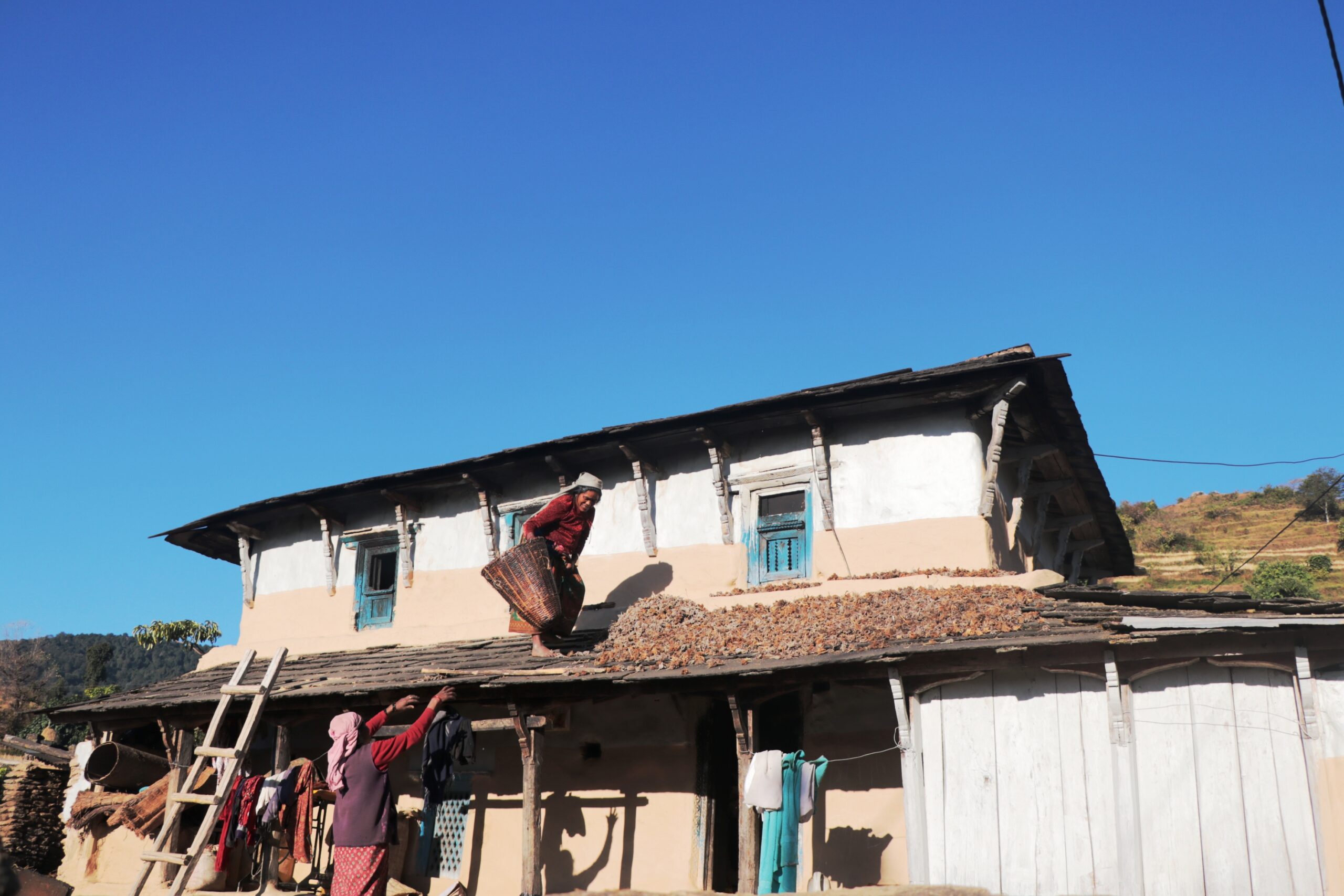
The fourth Living Standards Survey also shows a rise in wages. The average daily wage for temporary laborers in Nepal is Rs. 599, and they work at least 72 days a year. In Gandaki, the average wage is Rs. 711, higher than the national average. Bagmati Province has the highest daily wage at Rs. 821, while Madhesh has the lowest at Rs. 450.
Navaraj Ojha, Chairperson of the Gaunpalika Mahasang (Federation of Rural Municipalities) in Gandaki, says that with the implementation of various projects through local governments, income-generating opportunities in villages have increased. “Local projects have created jobs, and local governments have linked citizens with self-employment, creating opportunities for good wages within the villages,” says Ojha.
Deputy Director Regmi notes that even in the agricultural sector in Gandaki, the average wage per person is more than Rs. 700. He also highlights that skilled workers and those in construction earn even better wages, as shown by surveys.
Economist Khanal points out that Gandaki has always been an entrepreneurial region. “The region had good farming practices, education, and entrepreneurship. With the addition of tourism and remittances, income has further increased,” he says, “When the foundation is strong, it’s easier to continue to build, and that’s what’s happening in Gandaki now.”
Progress sans Industry
Before the 1990s, people from Gandaki used to travel to Indian cities to work as daily laborers. After the restoration of democracy, however, economic activities began to steadily increase. Gradually, industries and businesses started to emerge in neighboring cities in the country, and laborers no longer needed to emigrate abroad for seasonal work.
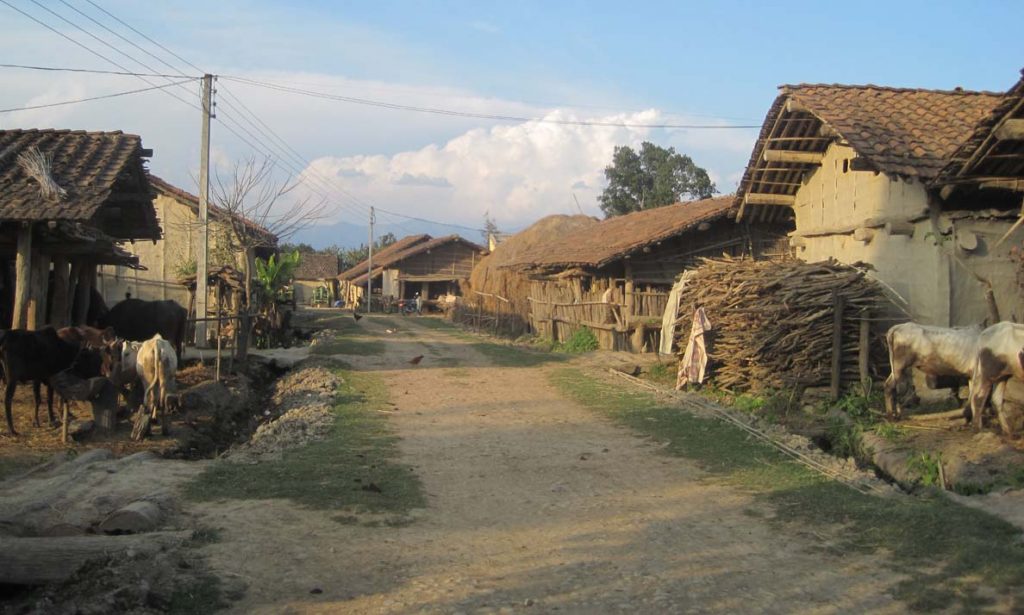
The southern region around Birgunj, has long been an industrial hub. Later, industries also opened in Butwal, Bhairahawa, and Nepalgunj in the west. In the east, where the capital city Kathmandu is located, industries developed in Bagmati, and in Koshi Province, industries had already emerged in Biratnagar. However, Gandaki Province is an exception and still lacks large-scale industries.
Industrial development is often seen as essential for lifting a society out of poverty, but Gandaki has managed to reduce poverty for millions of its citizens without large-scale industries, says former secretary Khanal. “While there are small-scale industries in Pokhara, Gandaki does not have a significant industrial sector,” he explains, “Gandaki’s recent economic achievements have been made without robust industrial development.”
According to a study by the Provincial Policy and Planning Commission, the contribution of manufacturing industries to Gandaki’s total gross domestic product (GDP) and employment creation is only 3.2%. Despite this, Gandaki has brought prosperity to its villages. The province also has lower poverty inequality (2.33%) and depth of poverty (0.71%) compared to other provinces. The national averages are 4.52% and 1.48%, respectively.
Among the seven provinces, Sudurpaschim province has the highest poverty inequality at 8.41% and the deepest poverty at 2.87%. This means that Gandaki’s poor, with the poverty depth of just 0.71%, are comparatively closer to the poverty line. As such, it is comparatively easier to escape poverty in Gandaki than any other province in the country.
Former Finance Minister Pandey attributes the improvement in living standards in Gandaki to advances in education, healthcare, and electricity. “People in Gandaki have access to education and healthcare,” he says, “With improvements in infrastructure in the past three decades, there was no need to wait for industrial development to reduce poverty.”
The Living Standards Survey also confirms that Gandaki ranks better than other provinces in terms of basic services provided by the state, says Regmi. Former Secretary Khanal, citing the settlements along the Kali Gandaki River, notes, “There is good connectivity even in remote villages. Traveling along the Kali Gandaki, you can see bright lights on both sides at night.”
Community Spirit
Like Hita Sharma in Ghandruk, Laxmi Chaudhary from Bhadagaun in Kailali, in Sudurpaschim Province, also started a homestay in 2067 B.S. Along with Chaudhary, 20 homes in Bhadagaun were converted into homestays. However, the tourists she had hoped for did not arrive. “Initially, we had some foreign guests, but now even domestic tourists don’t come,” she says.
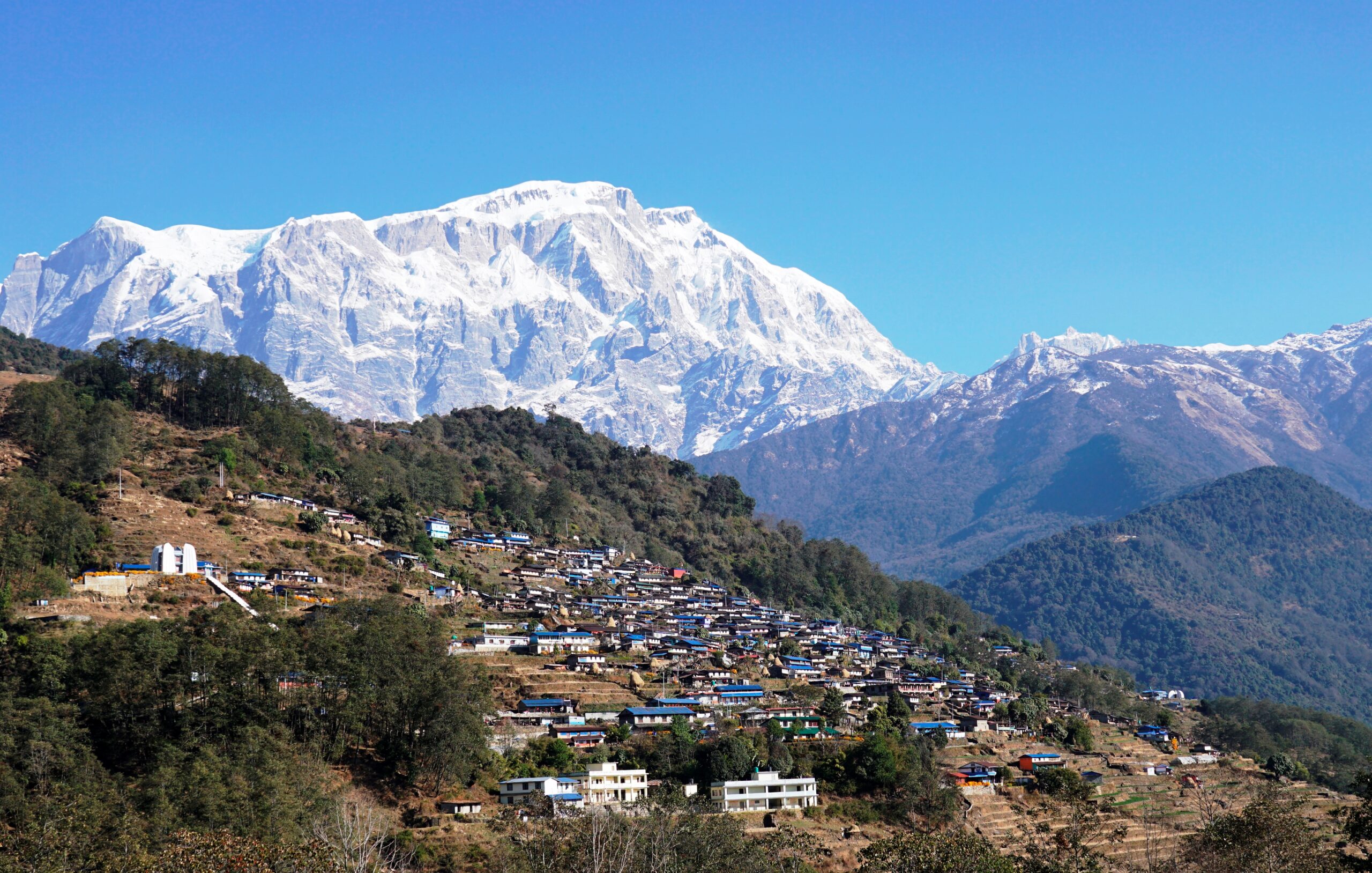
In the Tharu village of Bhadagaun, the aim was to attract tourists by offering Indigenous cuisine and showcasing local culture. However, despite starting homestays 13 years ago, there has been little improvement in the villagers’ living standards. “The road to the village is in poor condition, and we couldn’t provide the necessary amenities to visitors,” says Laxminarayan Chaudhary, chairperson of the Bhadagaun Tourism Development and Management Committee, highlighting the importance of robust infrastructure. According to him, they haven’t been able to upgrade their facilities for the few tourists that do come. “It costs up to Rs. 10 lakhs to improve the homestay experience, but we lacked the investment, and the government didn’t provide support.”
Meanwhile, the Gandaki Province government has been providing Rs. 10 lakhs in grants to run homestays. So far, 308 homestays have received such grants, according to data from the Provincial Policy and Planning Commission.
Furthermore, former Finance Secretary Khanal mentions that the level of community participation seen in Gandaki is not as prevalent in other provinces. “The tradition of discussion and debate, like the tea-house culture under peepal trees, is deeply rooted in Gandaki. People would gather, share joys and sorrows, and discuss community issues. This tradition is not as common in other places,” he adds. “In these discussions, problems are addressed, and solutions are sought. This sense of community has given Gandaki a high ‘growth momentum’.”
Other provinces have fertile land and tourist destinations, and even more industries than Gandaki. Remittances, both domestic and international, are also increasing. However, experts believe that a lack of infrastructure in these areas has prevented them from achieving results like Gandaki. Former Finance Minister Pandey states, “In Sudurpaschim province, poverty has not decreased because access to income sources is limited.” Regmi points out that the development of tourism and the flow of remittance in other provinces are not as strong as in Gandaki, contributing to their inability to reduce poverty.
But while Gandaki has made significant progress in reducing poverty, building upon it further poses a great challenge, experts say. “Until now, individual and community efforts have played a major role in reducing poverty in Gandaki. Going forward, the government needs to work in a more planned manner,” says Dr. Devkota, Vice-Chairperson of the Gandaki Province Planning Commission. He believes the current improvements should be capitalized on by focusing on new areas of development. “We need to attract private sector investment in the Mid-Hill Highway area. If we can make this highway vibrant, it will create new opportunities for prosperity,” Devkota says. “Tourism, agriculture, and water resources should also all be emphasized.”
The Gandaki Planning Commission has outlined plans to develop the Kali Gandaki region as a center for eco-tourism and agriculture, Seti and Madi as industrial corridors, and the Marsyangdi area as an educational hub, Devkota explains.
Time to Return to Villages
A decade ago, Nepal was considered a predominantly rural country. However, with the recent division of local levels and the rapid declaration of new municipalities, it is now being classified as more urban. According to the 2078 (2021) national census, 33.8% of the population resides in rural municipalities, while 66.2% live in urban areas. In contrast, in 2068 (2011), 82.9% lived in rural areas, and only 17.1% lived in municipalities.
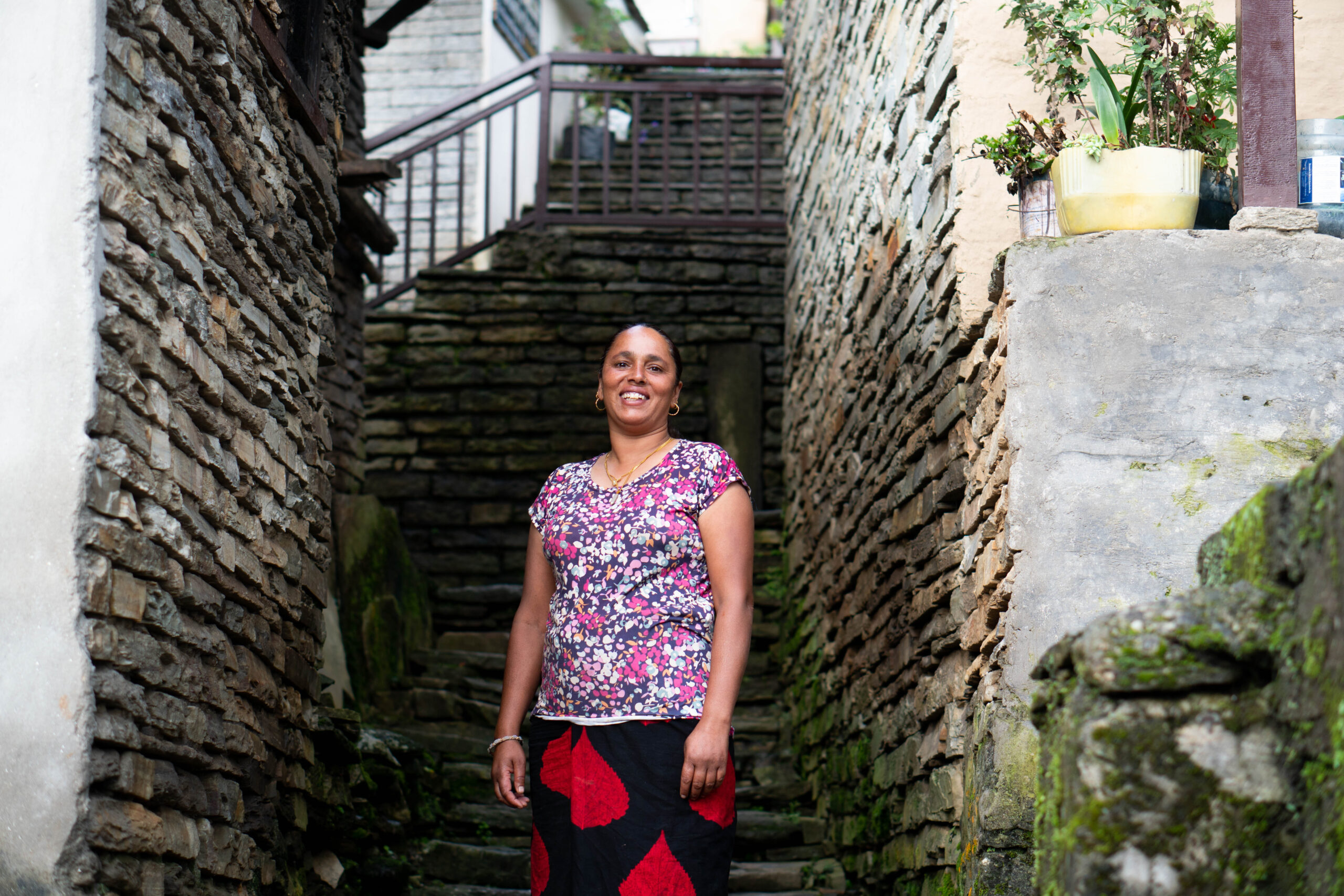
Many of the newly declared municipalities, however, have not developed into true urban areas due to a lack of infrastructure. While they are technically classified as urban, most of these settlements are still fairly rural. Navaraj Ojha, Chairperson of the Federation of Rural Municipalities in Gandaki, believes that income generation and employment opportunities can create an environment for people to remain in villages. He argues that poverty in rural areas can be reduced by empowering local governments and bringing agriculture and tourism-focused projects to these areas. Former Minister Pandey also believes that emigration can be stemmed by ensuring the extending basic services to rural villages.
“The situation in villages in Rukum and Jajarkot is dire. With no services, these places are unlivable, and people remain there only because they have no other choice,” says economist Khanal. “While youth migration has increased in Gandaki as well, the villages here are still lively due to tourism and resultant economic activities. Life in the villages here is still pleasant.”
Hita Sharma’s son currently lives in a rented flat in Pokhara, and both her children have asked her to move to the city. But she has no desire to leave her prospering village. If anything, she believes that Gandaki’s rural areas are primed to reverse the massive exodus of people out of rural Nepal.
“I’ve lived here my whole life, through both joys and sorrows,” says Sharma. “Now that things are finally easier, and I have no plans to leave. In fact, the time is right for those that have left for the cities to return back home.”



